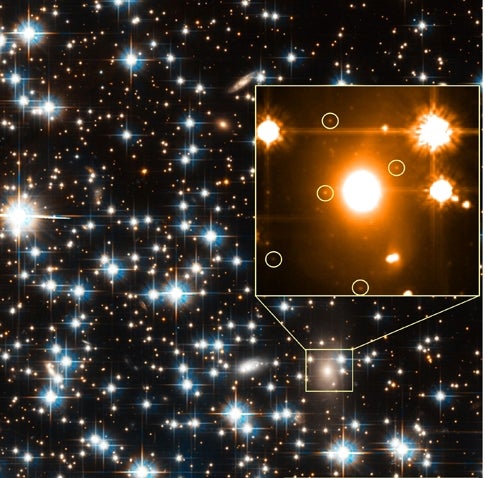While exploring deep Hubble Space Telescope images of a globular star cluster called NGC 6397, astronomers stumbled on a distant background galaxy harboring hundreds of similar clusters. Each is so distant, it appears only as a faint point of light, even to Hubble’s keen eye.
“The light we see today from these clusters was emitted more than a billion years ago and may hold important clues for understanding the evolution of globular clusters,” says Jason Kalirai at the University of California, Santa Cruz. He presented the research team’s findings this week at the American Astronomical Society meeting in Seattle.
The story began when Kalirai, the University of British Columbia’s Harvey Richer, and their colleagues began investigating NGC 6397. It lies 8,500 light-years away, which makes it one of the closest globular clusters — spherical collections of hundreds of thousands of stars. The researchers selected a small field within NGC 6397 and acquired the deepest optical images ever taken with Hubble’s Advanced Camera for Surveys with the aim of studying the cluster’s faintest stars.
Hidden in the background was a large elliptical galaxy with its own retinue of globular clusters. A single giant star in NGC 6397 outshines one of the background galaxy’s clusters by 10 million times.
Kalirai and Richer followed up on the find by obtaining spectra using the Gemini South Telescope in Chile. The galaxy’s redshift indicates a distance of more than 1 billion light-years, which makes the globular clusters the most distant ever studied.
“The properties that we infer for these clusters may represent an important clue in understanding what our own Milky Way globulars … looked like in the past,” explains Kalirai. With nearly 200 clusters around this one galaxy, the team aims to test whether the cluster properties are consistent with the notion that elliptical galaxies formed most of their stars early on. For the first time, astronomers may be able to look for changes in the properties of globular clusters as the universe aged.










